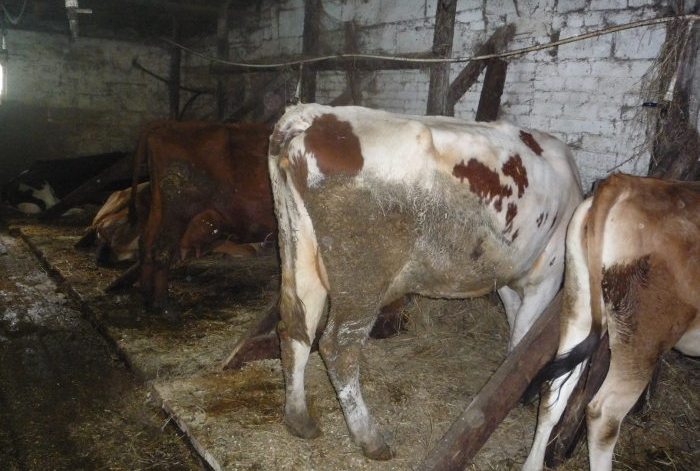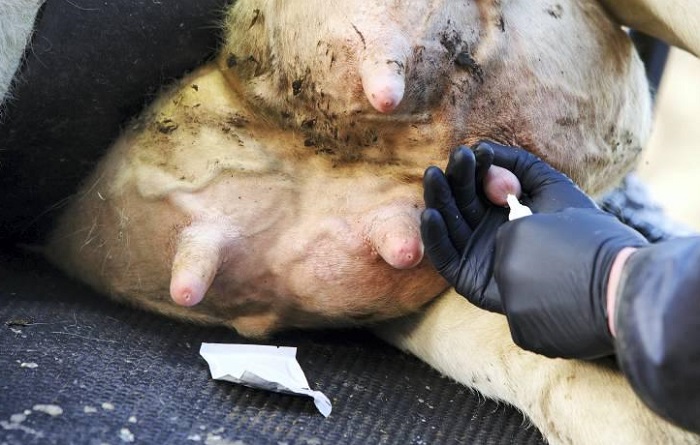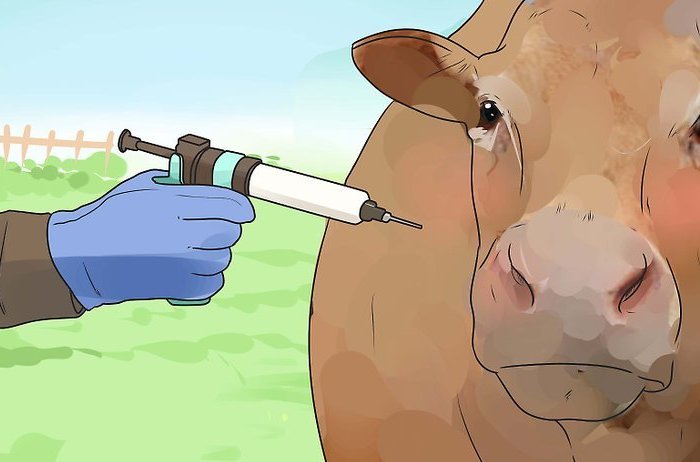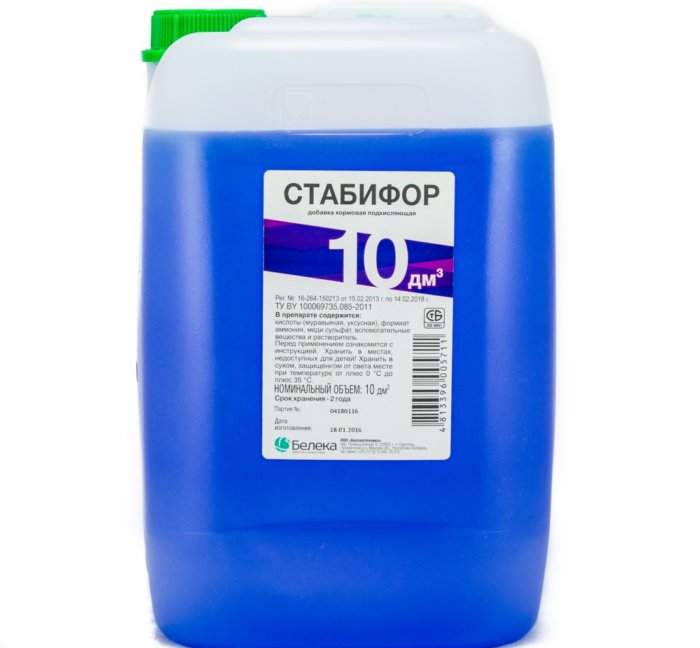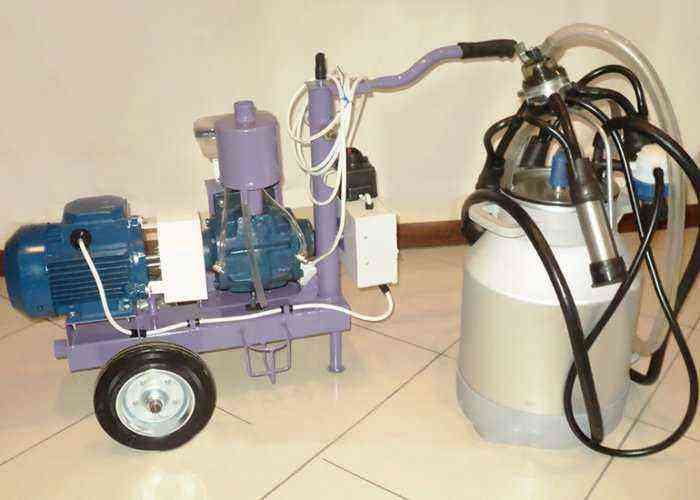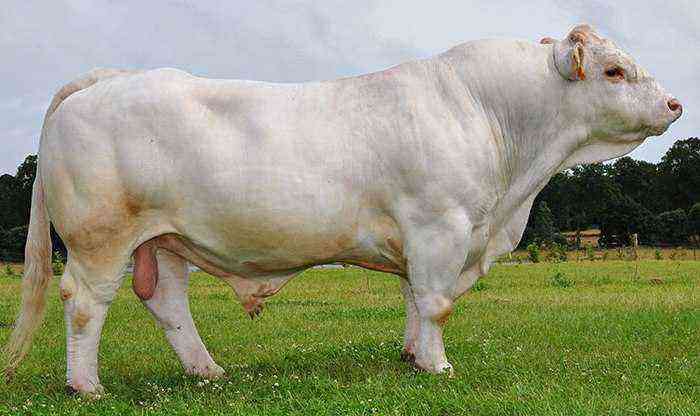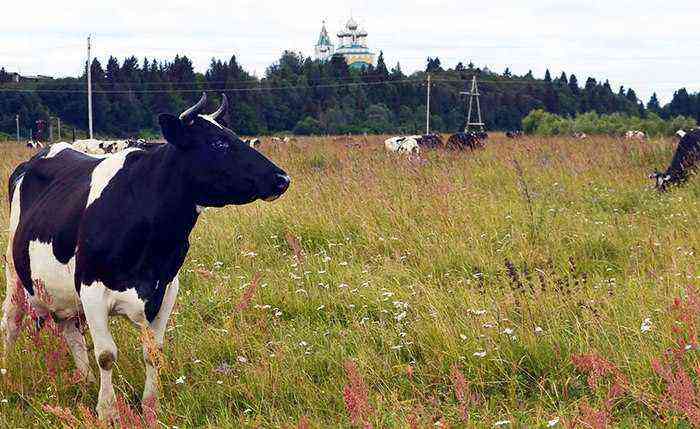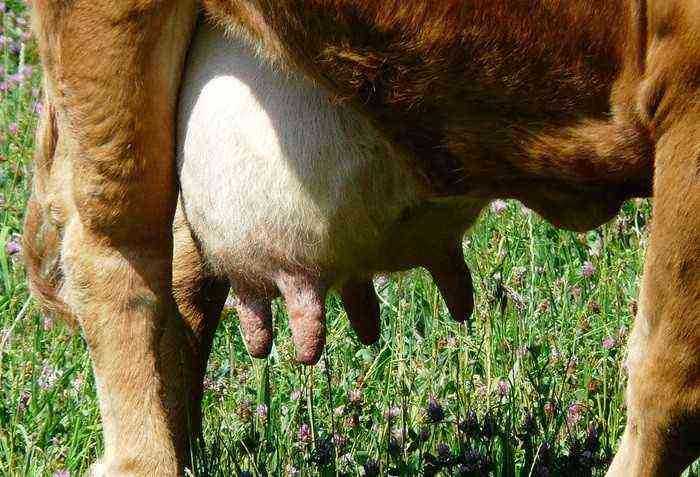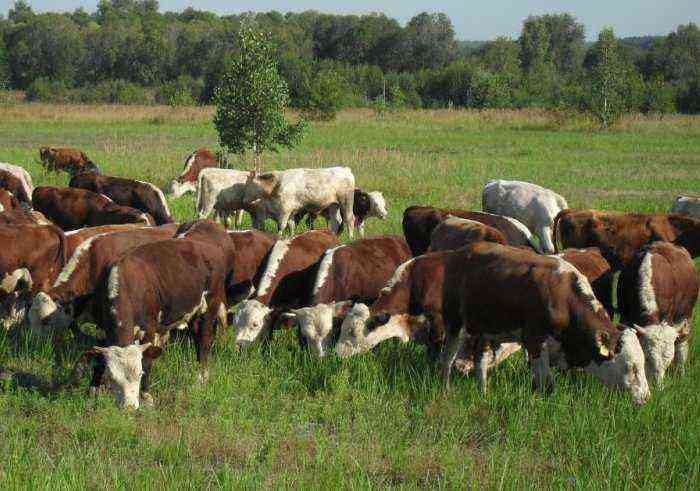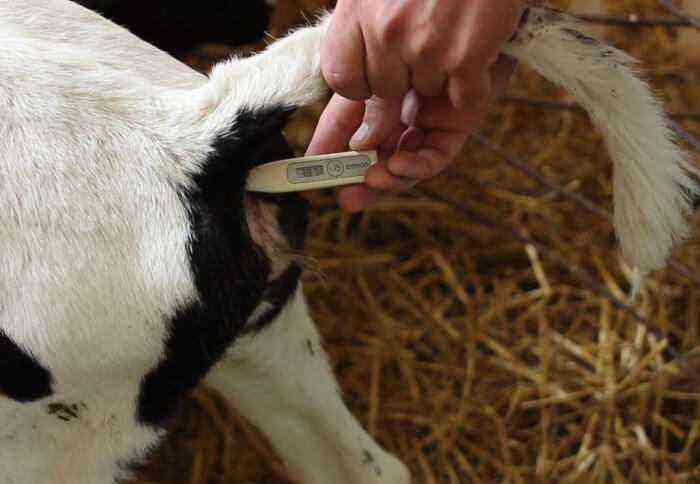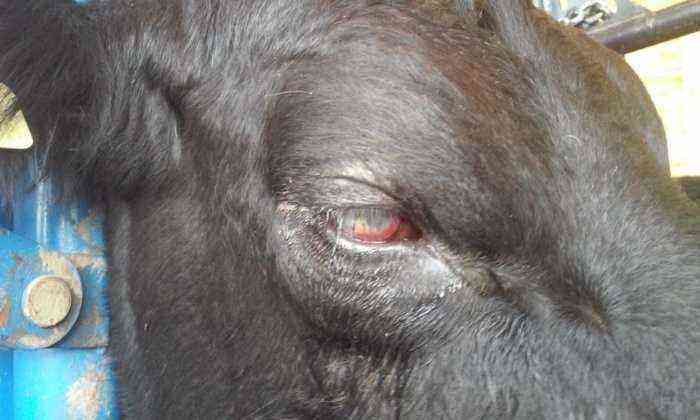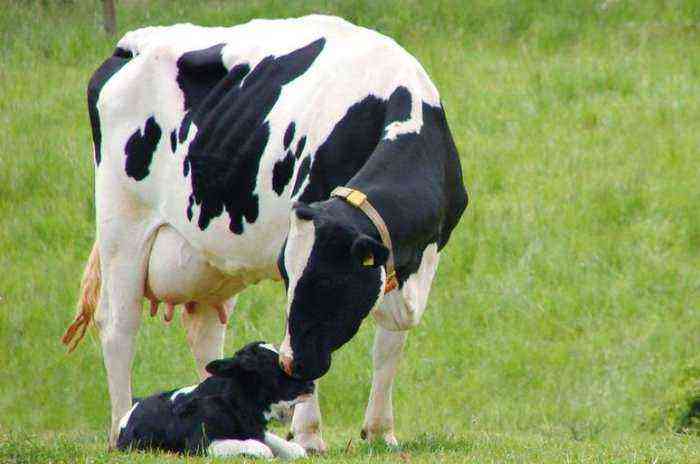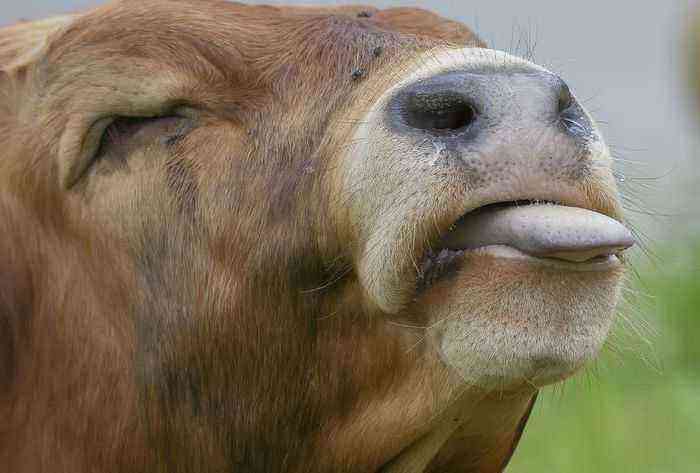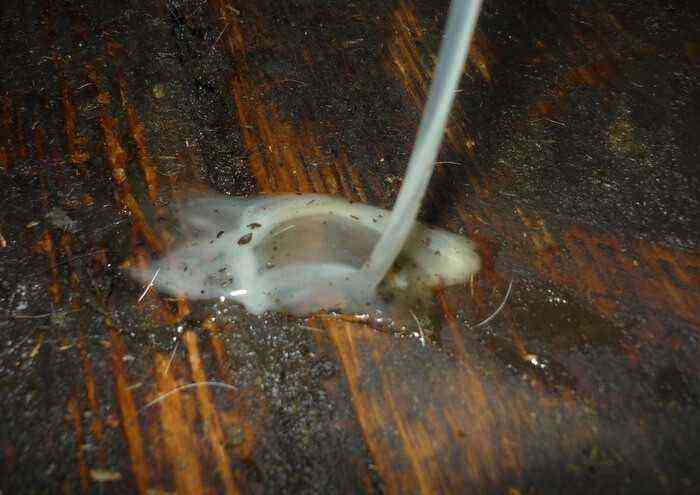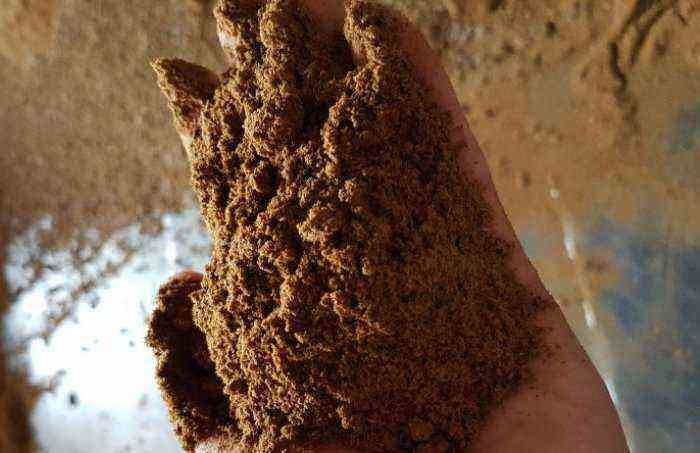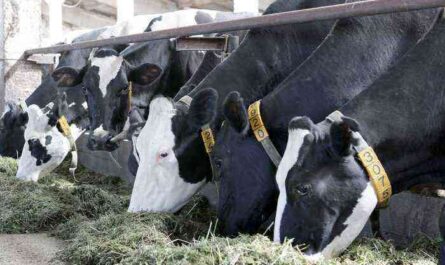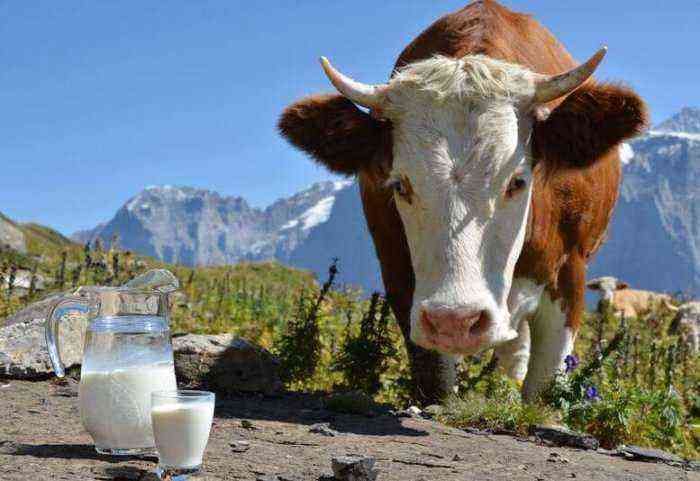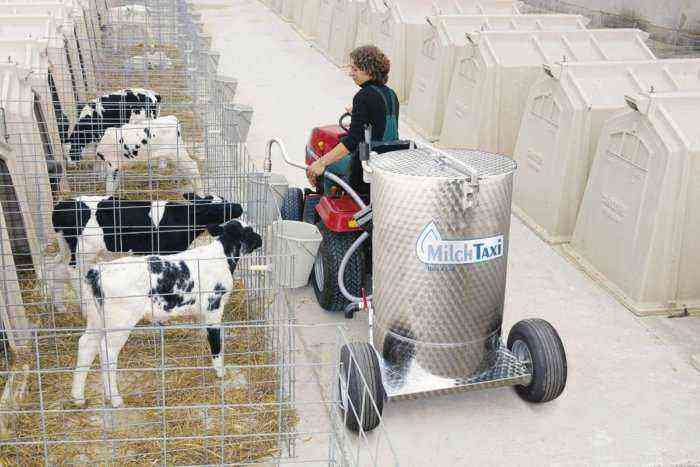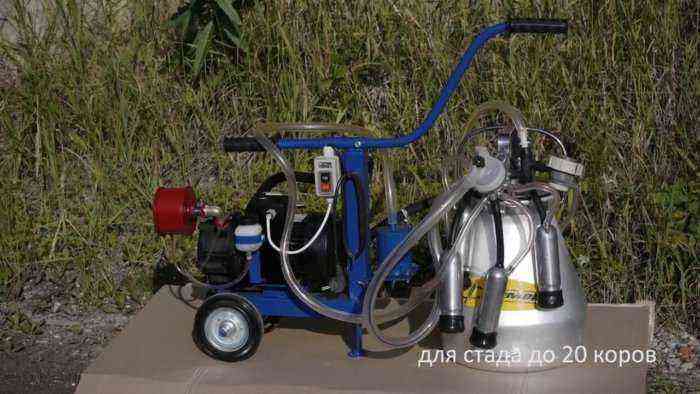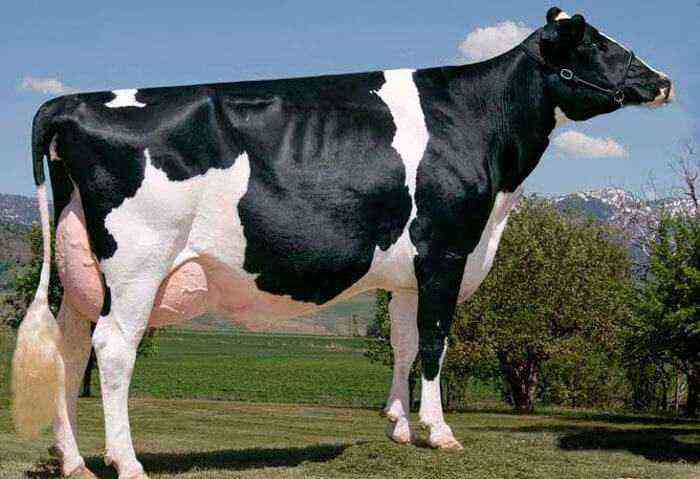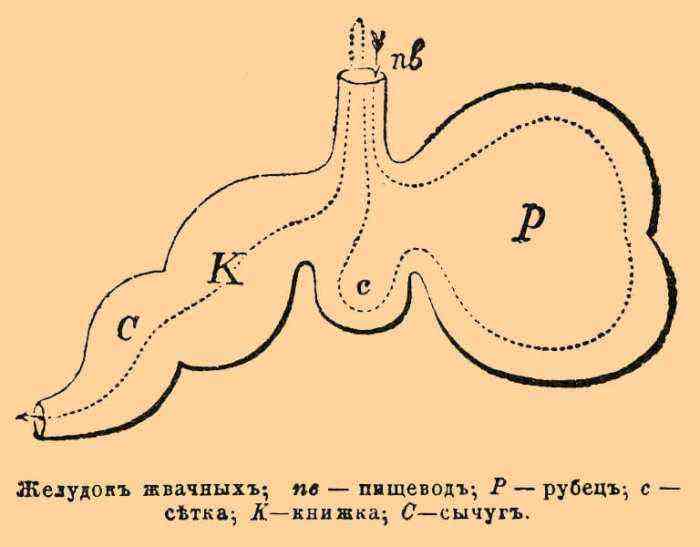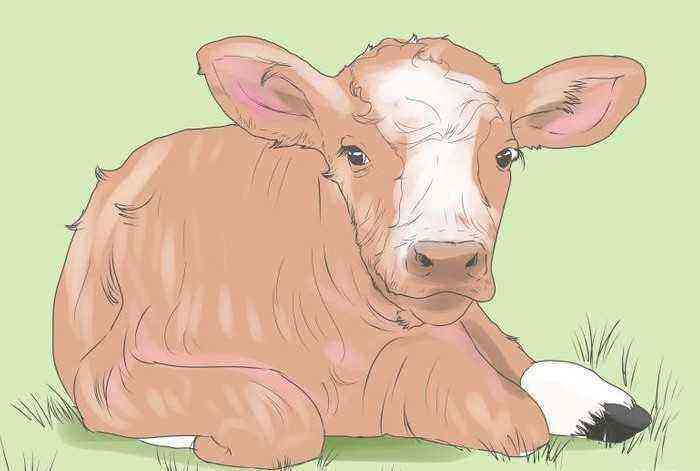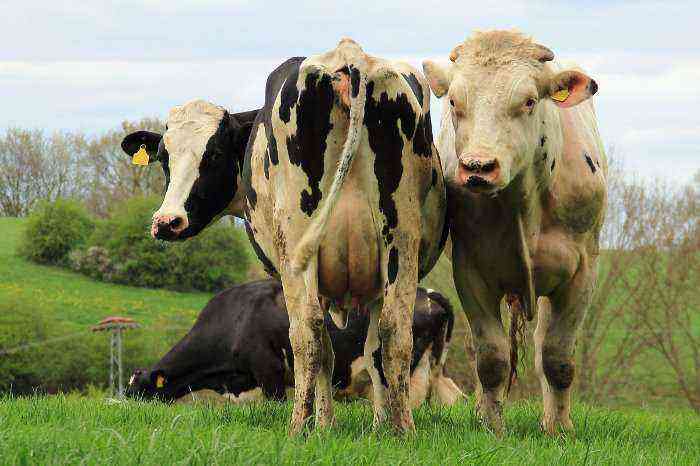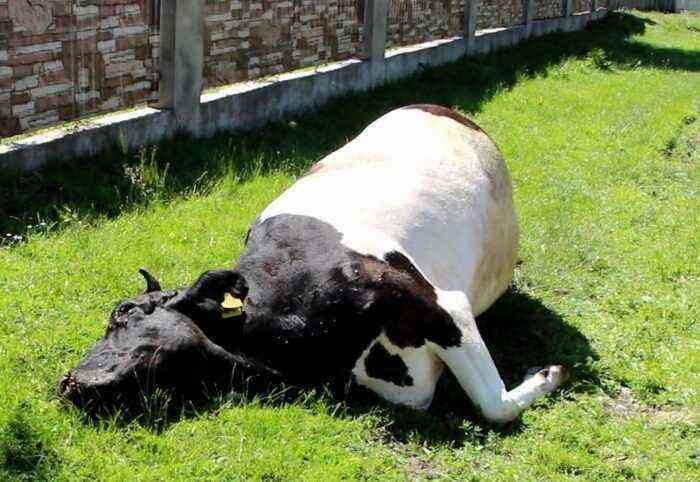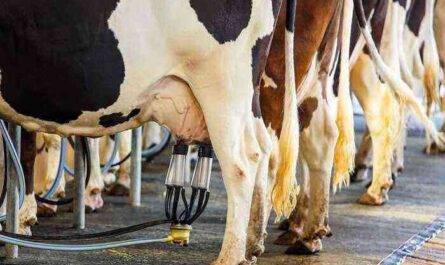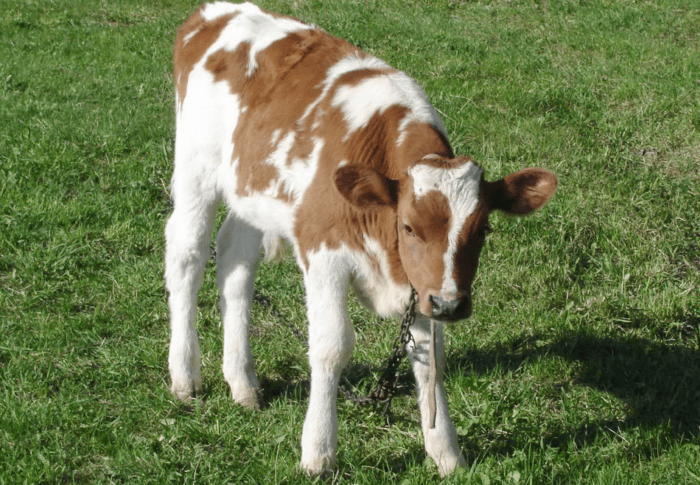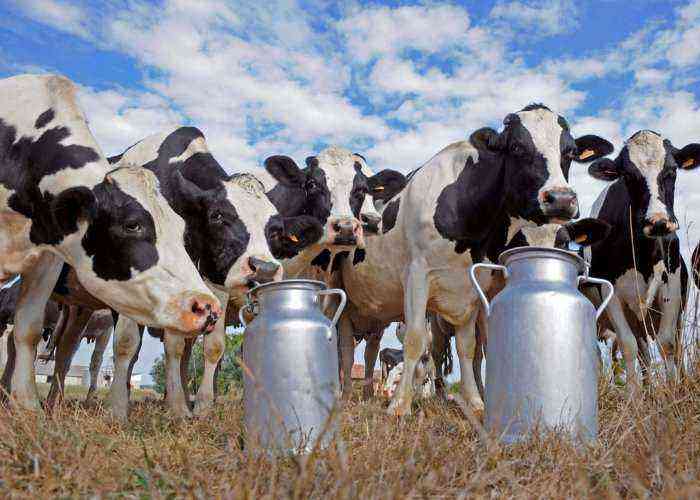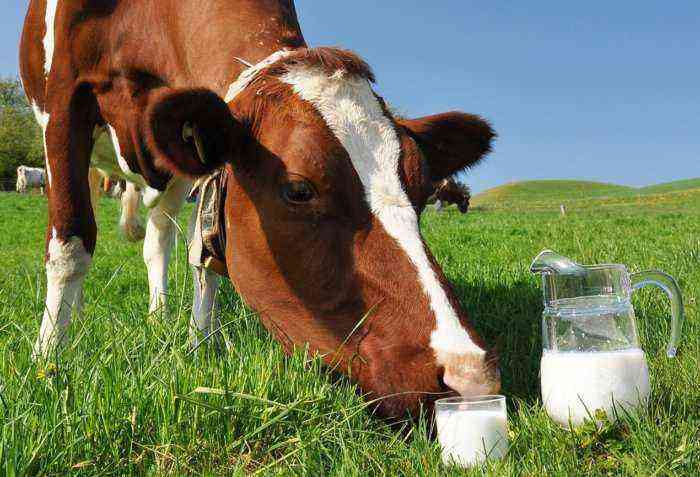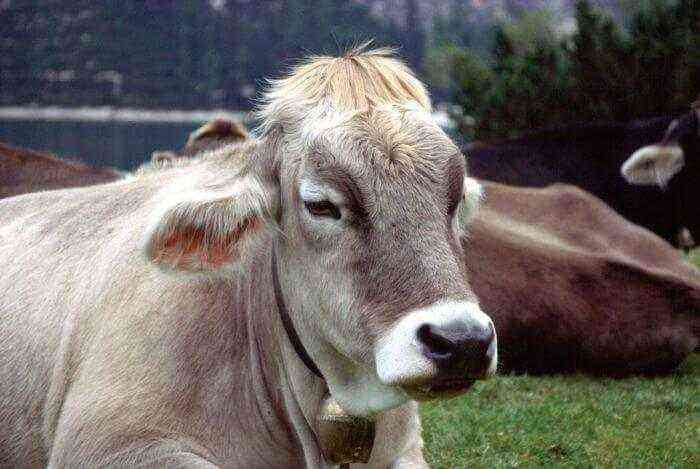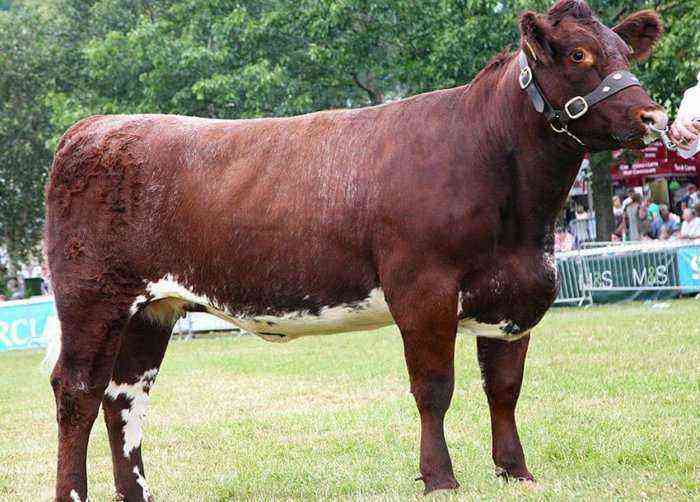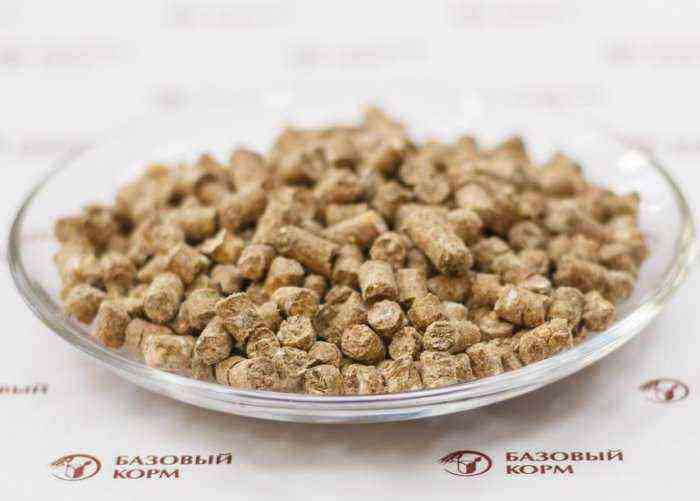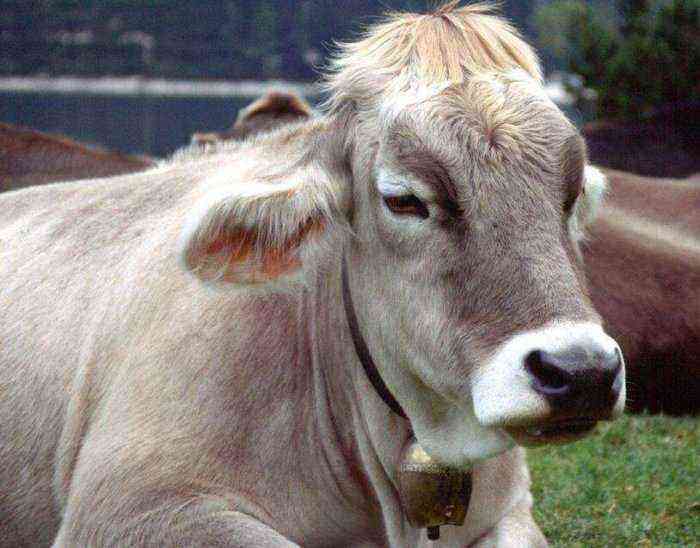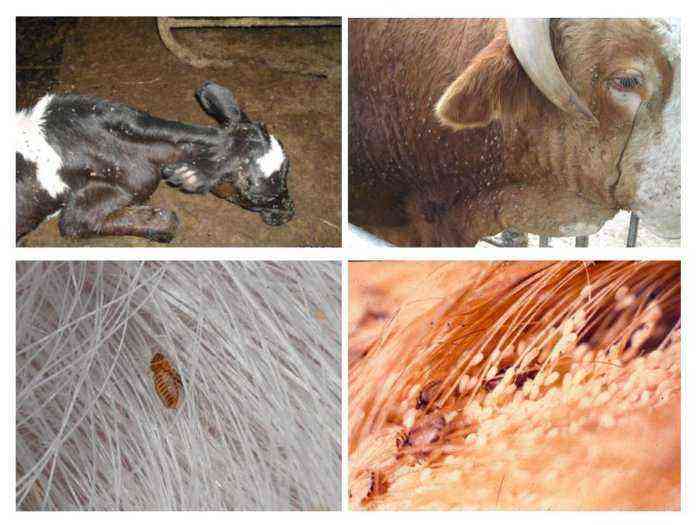Bovine necrobacillosis is an infectious disease that affects domestic and wild animals. It is accompanied by purulent-necrotic infection of the skin and tissues, with subsequent involvement of the mucous membranes and internal organs in the process.
Pathologies in cattle
Causes of appearance
The causative agent of necrobacillosis in cattle is anaerobe. This is a Gram-negative rod. Motionless, does not form a dispute. Anaerobe is able to live in the soil for about 2 months, and in the water and urine of the animal for 2 weeks. The carriers of the sticks are infected cows. Penetrating into favorable living conditions, the infection spreads rapidly. According to studies, the risk of rapid development of pathology remains in rooms where there are rats.
The main reasons for the development of an infectious disease are:
- keeping cattle in damp premises;
- lack of cleaning and bedding change;
- constant contact of the animal with manure;
- lack of hoof treatment;
- walking in wetlands;
- poor-quality food with traumatic objects.
According to experts, the risk of developing an infectious disease persists with malnutrition and unsatisfactory living conditions. The presented factors are fundamental in 90% of all cases.
Unbalanced and irregular nutrition leads to a decrease in the natural resistance (resistance) of the body. Violations are also recorded from the side of metabolic processes. The rules for feeding cattle must be observed, otherwise the risk of dangerous pathologies increases. The animal becomes susceptible to negative factors, which is due to a decrease in the protective function of the body.
Unsatisfactory conditions for keeping cattle
Unsatisfactory conditions of detention make an undeniable contribution to the process of formation of various pathologies. The farmer must ensure a decent living for animals by promptly removing dampness, eliminating manure and replacing flooring. This category includes compliance with sanitary standards and timely animal care, in the form of hoof treatment.
Evidence
It is almost impossible to recognize the presence of necrobacteriosis without examining a specialist. The disease is characterized by a mass of clinical manifestations, however, due to non-specificity, they are inherent in most other pathologies. The main symptoms of the disease include:
- general malaise;
- refusal to eat;
- decrease in productivity;
- unwillingness to move.
With intense damage to the limbs, the animal limps and constantly draws its hooves. On examination, swelling and soreness, redness and intense purulent discharge are observed. Feeling the limb causes anxiety in the animal. At the initial stage, necrosis has a clear outline, then it gradually expands, forming ulcers and fistulas. All this is accompanied by a characteristic smell.
The defeat of the skin is fixed in the neck, udder and genitals. As the pathology spreads, abscesses and ulcers appear. Cattle have mastitis.
Mastitis in cattle
The lesion of the skin is rapidly spreading, covering the mucous membranes. In the oral cavity of the animal, edema and necrotic ulcers are noticeable. Abundant salivation and lacrimation is recorded. In the absence of a therapeutic effect, the internal organs also suffer. Necrotic lesions are characteristic of the stomach, liver and lungs. This form of pathology is considered the most severe. In the absence of radical assistance, the animal dies within 2-3 weeks.
Reference. The pathological process is common in all countries of the world, periodic outbreaks of infection are recorded on the territory of Belarus, Russia and Ukraine. Cows are at risk, with an intensive spread of the disease, a rapid weight loss (50-100 kg) is recorded.
Diagnostics
The diagnosis is made on the basis of laboratory and instrumental studies. The animal undergoes a comprehensive examination, accompanied by an examination by a veterinarian and the identification of the main symptoms of the disease.
The final diagnosis is made in the following cases:
- in the presence of characteristic necrotic lesions of the skin, mucous membranes and internal organs;
- in the isolation of pathogenic microorganisms in the study of waste products.
Additionally, a differential diagnosis is made to exclude such diseases as foot-and-mouth disease, fever, purulent endometritis, stomatitis, tuberculosis and viral-type diarrhea. The need to conduct research for the purpose of exclusion is a necessary measure. This is due to the non-specificity of the clinical manifestations of necrobacteriosis and its similarity with other pathological processes.
Treatment
Sick animals are necessarily isolated from healthy individuals. Therapeutic therapy begins as early as possible, the well-being of cattle depends on the correctness and timeliness of the impact. Treatment includes both group and individual remedies.
Individual methods include the following:
- surgical treatment of hooves (removal of necrotic tissues, pus and deformation);
- sanitation of the affected cavity using disinfectants (potassium permanganate, furatsilin, chloramine) and antimicrobial (levomecithin, erythromycin, tetracycline) action;
- treatment with antiseptics in the form of powders and powders.
Dibiomycin, administered intramuscularly
The pathogen must be eliminated from the affected area. According to experts, Dibiomycin is a highly effective drug. It is administered intramuscularly, blocking the action of the anaerobic bacillus and the further spread of the infection. The duration of therapy is determined on an individual basis, in most cases it does not exceed one week.
In the advanced stages of the disease, intramuscular injection is carried out additionally, according to the doctor’s indications. The treatment regimen is adjusted depending on the general condition of the animal.
Group therapy is based on systematic foot baths. They must be installed in all places where the animal moves. Baths are based on the use of disinfectant solutions, in particular Zinc Sulfate or Zincosol. Additional treatment of the affected areas is carried out every 5-10 days, both for therapeutic and prophylactic purposes.
A detailed treatment regimen is compiled by a veterinarian, based on an examination of the cow and the studies carried out. Independent attempts to cope with the disease, in most cases, end in an unfavorable outcome.
Attention! Self-medication is strictly prohibited! The farmer runs the risk of losing the animal and infecting livestock in close proximity to him.
Prevention
Prevention is the best way to prevent infection. Prevention is based on compliance with veterinary and sanitary rules. Experts recommend normalizing feeding, especially in susceptible animals. With weakened protective functions of the body, the cow runs the risk of getting sick with an infectious pathology. To normalize immunity, it is recommended:
Stabifor
- the use of the drug Stabifor (according to the doctor’s indications);
- the use of bacterial starter in the preparation of succulent feed;
- introduction of concentrated food into the diet;
- providing the animal with a sufficient amount of liquid;
- normalization of the pH level.
Additionally, experts recommend the use of mineral supplements, multivitamin and enzyme complexes. To prevent the development of pathology, it is advisable to normalize not only nutrition, but also the living conditions of the animal. The room needs systematic cleaning, replacement of flooring and removal of manure. The lack of basic sanitary standards increases the likelihood of the spread of the pathogen.
The hooves of the animal need timely cleaning and trimming (in case of regrown parts). If damaged areas of the skin are found, they must be treated with iodine or birch tar. The animal should be fixed in a supine position.
Conclusion
Necrobacteriosis is a dangerous disease that can lead to the death of an animal. In order to avoid the development of infectious pathology, experts recommend observing sanitary and preventive measures and providing cattle with a balanced diet. With the development of the disease, the animal needs emergency care. Lack of therapy is an ideal condition for the spread of the disease.
